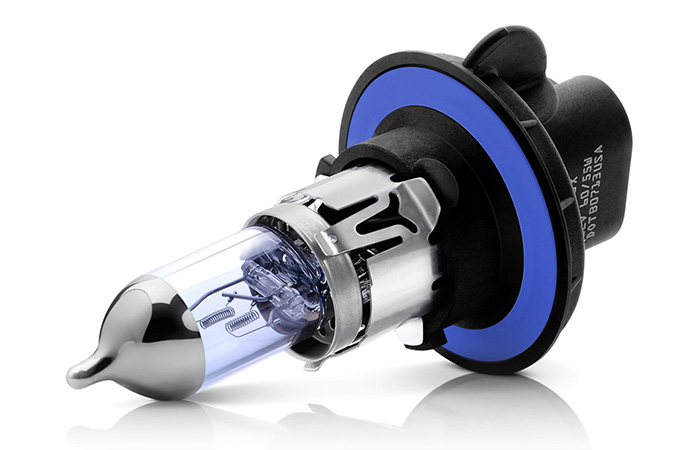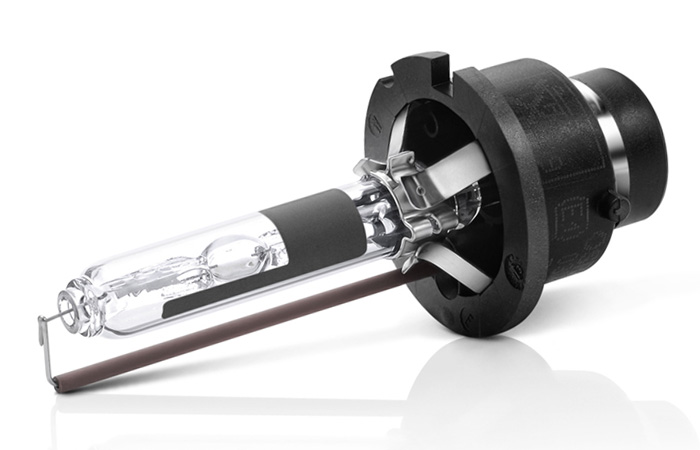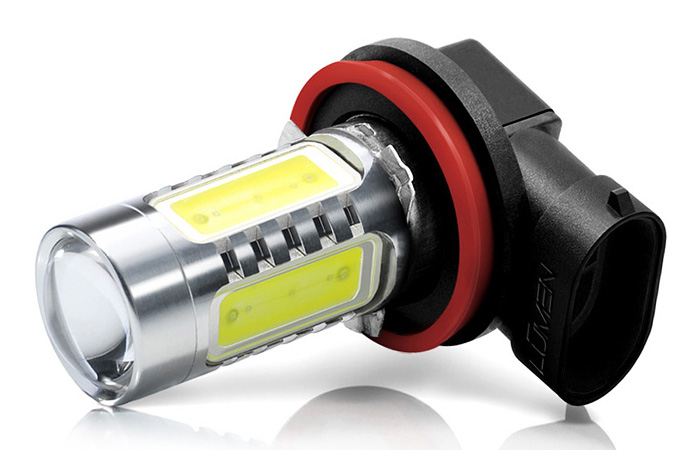You've probably experienced this before: you are driving down a street at night and you notice that the road in front of your vehicle is not as lit as it normally is. You pull over and notice that one of your headlight bulbs is no longer on. This is both a legal and safety concern.
Regular vehicle maintenance is a necessity and it can often times be costly. This does not mean, however, that you always need to seek out a repair shop or visit the dealership. There are many simple maintenance jobs that you can do yourself with a little bit of knowledge. Here are three things to consider when choosing a headlight bulb:
Type of bulb

Halogen. Halogen bulbs are the most common type of bulb used for automotive headlights. They are a filament style bulb, similar to those you would find in a house lamp. Halogen bulbs are low maintenance and generally are the least expensive option.

HID/ Xenon. HID (High Intensity Discharge) bulbs entered the automotive industry in the mid- 1990s and are becoming an increasingly popular factory option for mid-high end vehicles like BMW, Mercedes, and Audi. Unlike halogen, HID bulbs do not have a filament. Instead, their light comes from the ignition of xenon gas within the glass. Compared to a halogen bulb, HIDs offer substantially increased lumens (brightness), a statistically longer use life, and require less wattage while running. If your vehicle came equipped with HID bulbs, then your replacement bulb will also have to be an HID. If your vehicle did not come with factory HID bulbs you can switch your bulbs by purchasing a conversion kit. Because HID bulbs require a different electrical current than your vehicle produces, a ballast is required with these bulbs. Most of these conversion kits are "plug and play" and are an easy to moderate DIY project.

LED. LEDs (Light emitting diodes) are the newest technology for headlight bulbs, but LED technology has been around since the mid- 1900's. In the automotive industry, LEDs are commonly used in "non-projection applications" such as interior lights, license plate lights, and taillights. They have only recently been configured for use in projection applications like headlights. Unlike halogen bulbs, LEDs do not require a ballast, or any other special wiring. Also, because they are a diode they are much more durable than both the halogen and HID bulbs. Similar to the HID bulbs, there are conversion kits if your vehicle does not have LEDs as a factory equipment. LEDs are generally your most expensive bulb option.
Wattage
Headlight bulbs do come in different wattages. The higher the wattage the more lumens a bulb will put out. Standard halogen replacement bulbs are generally 55 watts for most vehicles while HID bulbs run at around 35 watts. Increasing the bulb wattage that you use will increase brightness, however because you can easily blind oncoming traffic, some states have restrictions on the maximum wattage your headlights can be. Also, the more you increase the wattage of your bulb, the more strain you are putting on your vehicle's electrical system, which may cause bulbs to sometimes dim or wires to overheat when used for long periods.
Kelvin Rating

Kelvin rating, in terms of bulbs, will determine what color light your headlights will emit. Lower Kelvin ratings (2,500K to 3,500K) will look yellow, 3,800 – 4,000 will look white, and then the higher kelvin will turn blue (6,000K – 10,000K) then eventually purple (12,00K). Kelvin rating has no effect on brightness, but the change in color may make it appear that higher wattage blue/ purple bulbs are not as bright as the mid-range bulbs. For both legality and safety reasons, most street legal headlight bulbs will be available in the 3,400K to 5,000K range.
Regular vehicle maintenance is a necessity and it can often times be costly. This does not mean, however, that you always need to seek out a repair shop or visit the dealership. There are many simple maintenance jobs that you can do yourself with a little bit of knowledge. Here are three things to consider when choosing a headlight bulb:
Type of bulb

Halogen. Halogen bulbs are the most common type of bulb used for automotive headlights. They are a filament style bulb, similar to those you would find in a house lamp. Halogen bulbs are low maintenance and generally are the least expensive option.

HID/ Xenon. HID (High Intensity Discharge) bulbs entered the automotive industry in the mid- 1990s and are becoming an increasingly popular factory option for mid-high end vehicles like BMW, Mercedes, and Audi. Unlike halogen, HID bulbs do not have a filament. Instead, their light comes from the ignition of xenon gas within the glass. Compared to a halogen bulb, HIDs offer substantially increased lumens (brightness), a statistically longer use life, and require less wattage while running. If your vehicle came equipped with HID bulbs, then your replacement bulb will also have to be an HID. If your vehicle did not come with factory HID bulbs you can switch your bulbs by purchasing a conversion kit. Because HID bulbs require a different electrical current than your vehicle produces, a ballast is required with these bulbs. Most of these conversion kits are "plug and play" and are an easy to moderate DIY project.

LED. LEDs (Light emitting diodes) are the newest technology for headlight bulbs, but LED technology has been around since the mid- 1900's. In the automotive industry, LEDs are commonly used in "non-projection applications" such as interior lights, license plate lights, and taillights. They have only recently been configured for use in projection applications like headlights. Unlike halogen bulbs, LEDs do not require a ballast, or any other special wiring. Also, because they are a diode they are much more durable than both the halogen and HID bulbs. Similar to the HID bulbs, there are conversion kits if your vehicle does not have LEDs as a factory equipment. LEDs are generally your most expensive bulb option.
Wattage
Headlight bulbs do come in different wattages. The higher the wattage the more lumens a bulb will put out. Standard halogen replacement bulbs are generally 55 watts for most vehicles while HID bulbs run at around 35 watts. Increasing the bulb wattage that you use will increase brightness, however because you can easily blind oncoming traffic, some states have restrictions on the maximum wattage your headlights can be. Also, the more you increase the wattage of your bulb, the more strain you are putting on your vehicle's electrical system, which may cause bulbs to sometimes dim or wires to overheat when used for long periods.
Kelvin Rating

Kelvin rating, in terms of bulbs, will determine what color light your headlights will emit. Lower Kelvin ratings (2,500K to 3,500K) will look yellow, 3,800 – 4,000 will look white, and then the higher kelvin will turn blue (6,000K – 10,000K) then eventually purple (12,00K). Kelvin rating has no effect on brightness, but the change in color may make it appear that higher wattage blue/ purple bulbs are not as bright as the mid-range bulbs. For both legality and safety reasons, most street legal headlight bulbs will be available in the 3,400K to 5,000K range.


Sign in to post
Please sign in to leave a comment.
Continue